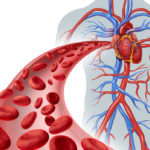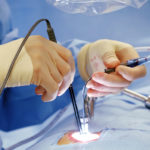
Coronary Artery Bypass Graft Surgery (CABG)
What is coronary artery bypass graft (CABG) surgery?
According to the American Heart Association, coronary artery bypass graft (CABG) surgeries are among the most commonly performed major operations. CABG surgery is advised for selected groups of patients with significant narrowings and blockages of the heart arteries (coronary artery disease). CABG surgery creates new routes around narrowed and blocked arteries, allowing sufficient blood flow to deliver oxygen and nutrients to the heart muscle.
How does coronary artery disease develop?
Coronary artery disease (CAD) occurs when atherosclerotic plaque (hardening of the arteries) builds up in the wall of the arteries that supply the heart. This plaque is primarily made of cholesterol. Plaque accumulation can be accelerated by smoking, high blood pressure, elevated cholesterol, and diabetes. Patients are also at higher risk for plaque development if they are older (greater than 45 years for men and 55 years for women), or if they have a positive family history for early heart artery disease.
The atherosclerotic process causes significant narrowing in one or more coronary arteries. When coronary arteries narrow more than 50 to 70%, the blood supply beyond the plaque becomes inadequate to meet the increased oxygen demand during exercise. The heart muscle in the territory of these arteries becomes starved of oxygen (ischemic). Patients often experience chest pain (angina) when the blood oxygen supply cannot keep up with demand. Up to 25% of patients experience no chest pain at all despite documented lack of adequate blood and oxygen supply. These patients have “silent” angina, and have the same risk of heart attack as those with angina.
When a blood clot (thrombus) forms on top of this plaque, the artery becomes completely blocked causing a heart attack.
When arteries are narrowed in excess of 90 to 99%, patients often have accelerated angina or angina at rest (unstable angina). Unstable angina can also occur due to intermittent blockage of an artery by a thrombus that eventually is dissolved by the body’s own protective clot-dissolving system.



